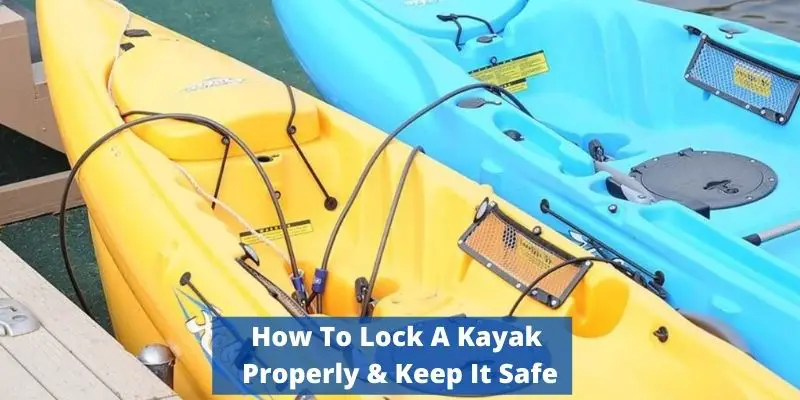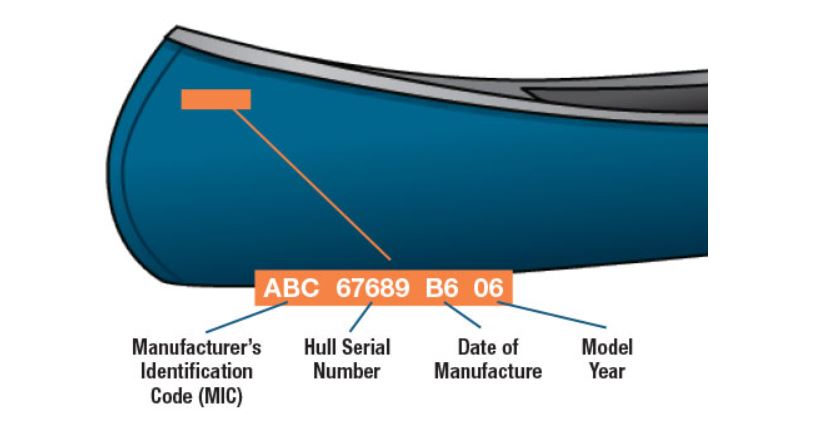You’ve spent a great deal of money on your kayak and you always want to make sure that it is safe. All of us know the price tag can be steep, but the bad guys out there are well aware of its worth too.
Keeping your kayak safe is an important part of owning one. Whether you’re storing it in the backyard or leaving it unattended while on a long road trip, make sure to take precautions against theft and vandalism by reading our step by step guide on how to lock a kayak properly.

How To Lock Up Your Kayak Safely
How To Lock Your Kayak At Home
When it comes to securing your kayak, there are a number of options. The best is always inside the home, garage or locked shed where thieves can’t get their hands on it and scatter with all those expensive parts.
But if you have no choice but to leave this beauty outside: Make sure it’s as close as possible to your home. A wall rack near exterior walls might also help keep that vessel off ground.
Check: How to build a kayak rack
How To Lock Your Kayak When On Road
You may be used to taking your kayak with you on road trips, but when it comes time for a camping trip or overnight excursion, locking up the boat becomes more crucial.
Kayaks are large and heavy, but they also need to be moved. Whether you’re hauling it in a kayak trailer or on the car’s roof rack using cable locks with tie-downs through the scupper holes will help keep your investment safe when traveling down the road.
Sit-inside mostly does not have drainage or scupper holes. You might need to install a kayak lock hole in your sit-inside kayaks if you don’t have dedicated cable bars. The Lasso locking cables can be used, but the watertight hull needs to stay intact.
Check: Best Lock For Kayaks
Locking Inflatable Kayaks
The ease of use and storage capabilities make inflatable kayaks an increasingly popular option. You can simply deflate your kayak, lock it up in a safe space, and take off on another adventure.
However, if you often find yourself traveling to the same spot for successive excursions (say from one neighborhood beach to another), then there might not be a need for constant deflation/inflation as long as you’ve got an enclosed storage area.
Lock up your inflatable kayaks with universal locks that are compatible with most sit-inside and traditional folding types. Be careful when choosing a solid anchor point or any slack will allow potential thieves an easy way to slide one end over the bow, stern.
The minimal weight of inflatable kayaks makes them much easier to pick up and carry off than other types, but if you’re planning on locking two in place then be sure that your “anchor” is set securely into the ground or a boat dock at all times; otherwise, it’s just too easy for someone with bad intentions to take both away.
What If You Are On A Camping Trip?
For the avid camper, securing their vessel to their car is key. On camping trips, you may not always have your vehicle with you so it might be hard to get ahold of any rope or other tying material for this task.
If you’ve invested in inflatable or folding kayaks, then storing them inside your tent is a simple solution.
Securing your hard-shell kayak isn’t a piece of cake, but it’s still doable. You’ll have to find a permanent structure like a tree or log nearby where you can fasten the kayak with cable locks:
Trees, logs – even docks if they’re close to you and solid structures near your campsite are all great places for securing your water rides.
Tips To Secure Your Kayak – What Else Can I Do?
Keep It Out Of Sight
Keeping a kayak out in the open could give thieves an opportunity to take it. You can avoid this by locking your vessel. But still, it remains tempting for the opportunists.
If you’re lucky enough to have space inside a garage or shed then do consider keeping it there as it would keep it hidden from the viewers. In case it’s not possible, it is recommended to keep it under a kayak cover.
Note Your Hull Identification Number (HIN)

It is a good practice to note the Hull identification number found near the stern of your craft. If you found out that your kayak was stolen, inform the authorities with all the other details and HIN right away so they can identify and return it.
If a thief tries to get rid of the HIN (Hull Identification Number), consider adding this number elsewhere on your craft where thieves are unlikely to see or find them easily.
Can Kayaks Be Insured? Yes!
Did you know that your homeowner’s insurance might have already covered all of the things in your kayak? It doesn’t hurt to check.
Now, the good news is if you happen to be a homeowner with an active policy there’s always a chance it covers more than just what belongs inside. But before going ahead and spending money on separate boat owner’s policies, make sure first by checking out any details included in whatever coverage plan this company offers.
It is important that you know what type of watercraft insurance policy is right. Not all policies are created equal and may not cover everything from expensive gear like fishing rods or electronics such as fish finders.
Concluding How To Lock Your Kayak
Whether you’re at home, on the road, or off on a multi-day kayaking adventure – knowing how to lock your boat is important if you want to keep it safe.
So remember: whether you are using your vessel for an afternoon paddle down by the river, taking a day trip out of state with friends in search of rolling waves and white sands beaches; locking up after use will help ensure that no one steals away this life-changing experience from under your nose.
